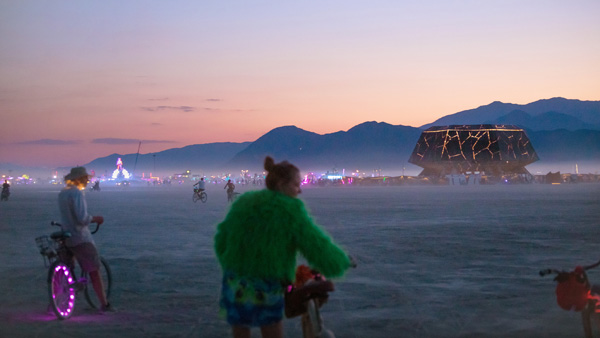Temple of the Deep: an ephemeral space for shared grief
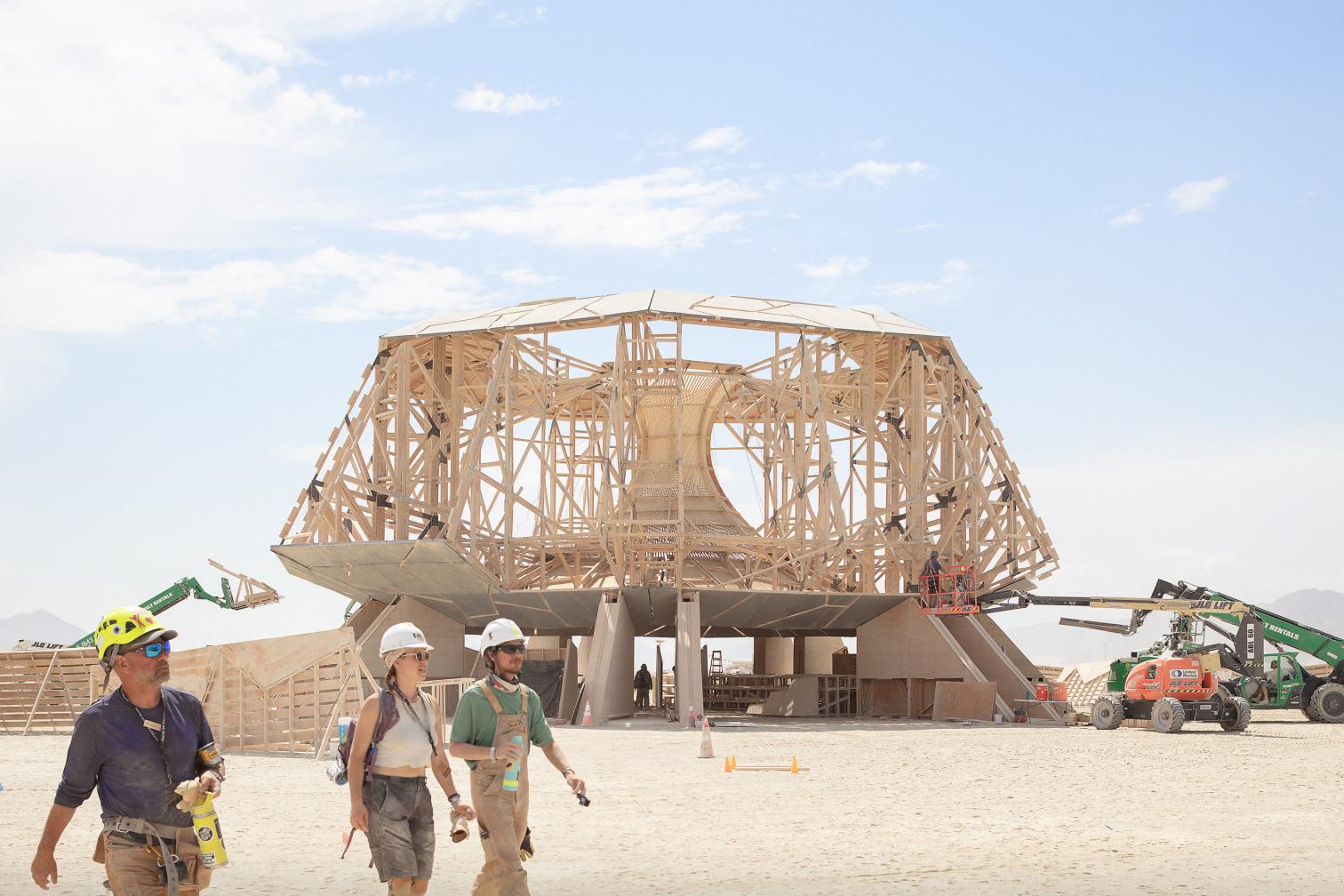
Construction.
Miguel Arraiz and Milena Villalba
Raising the Temple of the Deep in Burning Man 2025 was a unique experience. Nothing is permanent in the Black Rock Desert, yet there architecture takes on a different dimension: we built a large vessel for the emotions of thousands of people. This temple was not just a physical object, but a place where every gesture and every offering completed it.
On festival days, people from all around the world visited the temple and left messages and tokens for deceased loved ones, symbols of the mourning they were going through. It was this use – intimate and collective at the same time – that made the building meaningful. Closure came on the last day, when the building burned in absolute silence. Compared with the explosive energy of the burning of the Man, that of the temple was a silent catarsis, a purifying conflagration that echoed in the middle of the desert as a rite of farewell and collective healing.
The project began to shape up in March in an Oakland warehouse, where with an army of volunteers we built pieces that were later transported in trucks to Nevada. Finally, 150 or so of us settled for a month in the desert to erect the structure. The conditions were not easy: sandstorms of more than 100 km/h put both the design and the team’s resilience to the test. We had calculated the structure to withstand climate forces, but living them in the flesh is the best lesson on the magnitude of nature.
The temple was built on a budget exceeding 700,000 dollars, fully covered by anonymous donations. In accordance with Burning Man principles, there was no chance of advertising compensation, so each contribution was a sincere act of generosity. In addition, the construction went up solely through the effort of volunteers; hundreds of hands taking part – beyond the technical – in a collective rite.
The project also reinforced the cultural dialogue that has been growing for ten years now between Valencia and Black Rock City. Since 2016, when we brought the installation Renaixement to the desert, the connection of the Valencian tradition of fire to the Burning Man community has only consolidated. Designing the central temple of this year’s festival – and being the first Spaniard to do so – was not just an honor, but also the confirmation that architecture can be emotion, memory, and community.
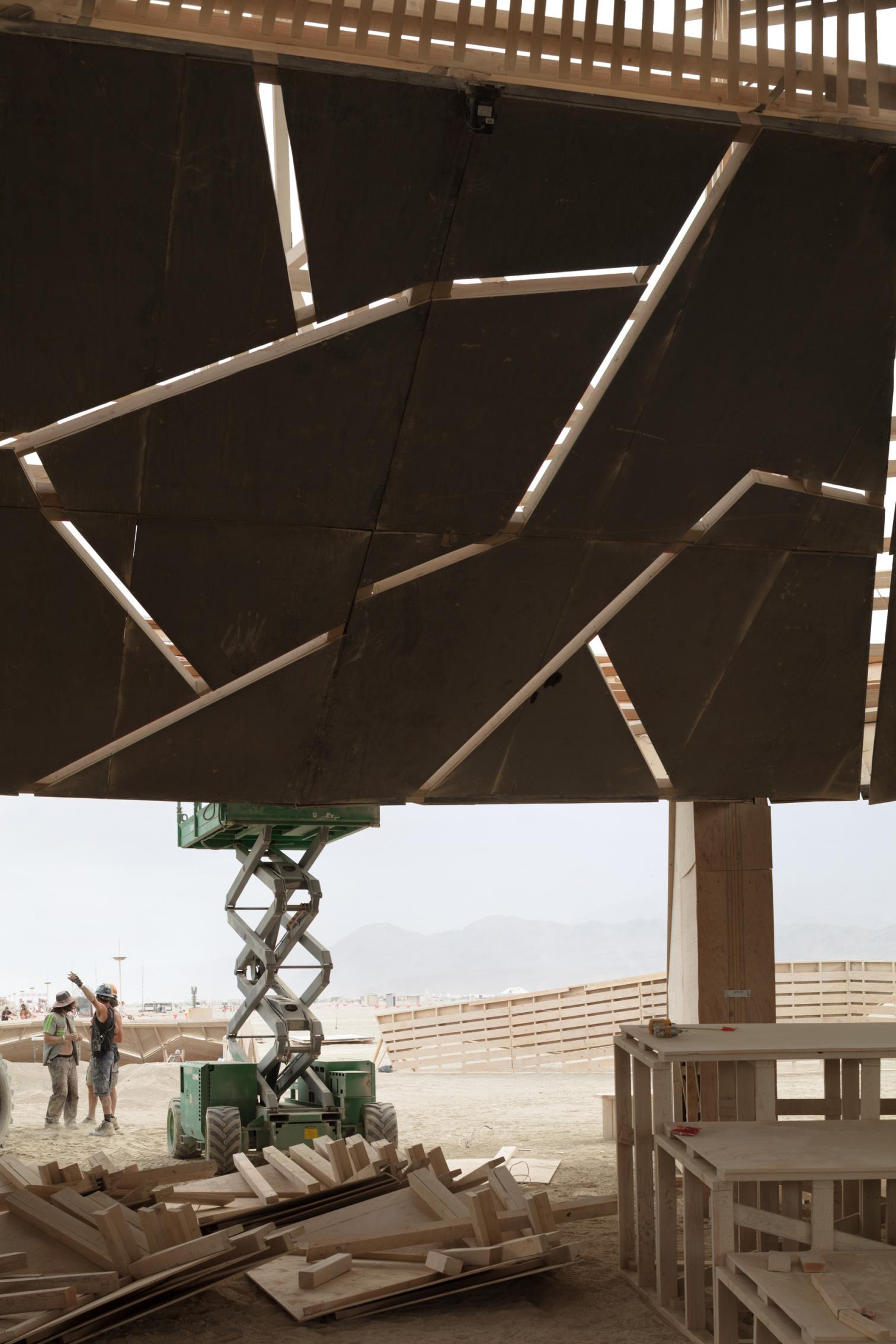
Construction.
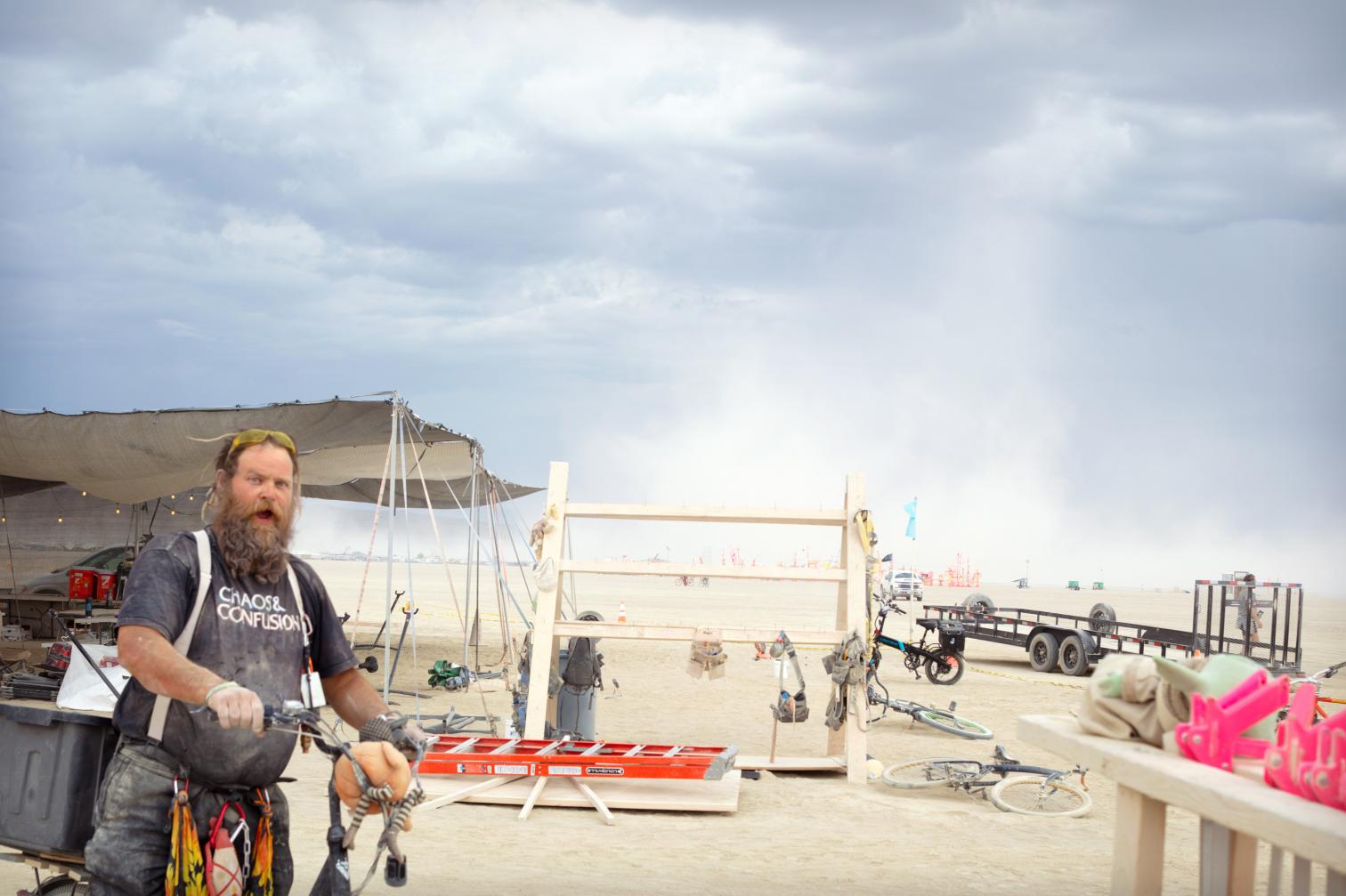
Sandstorm approaching during construction.
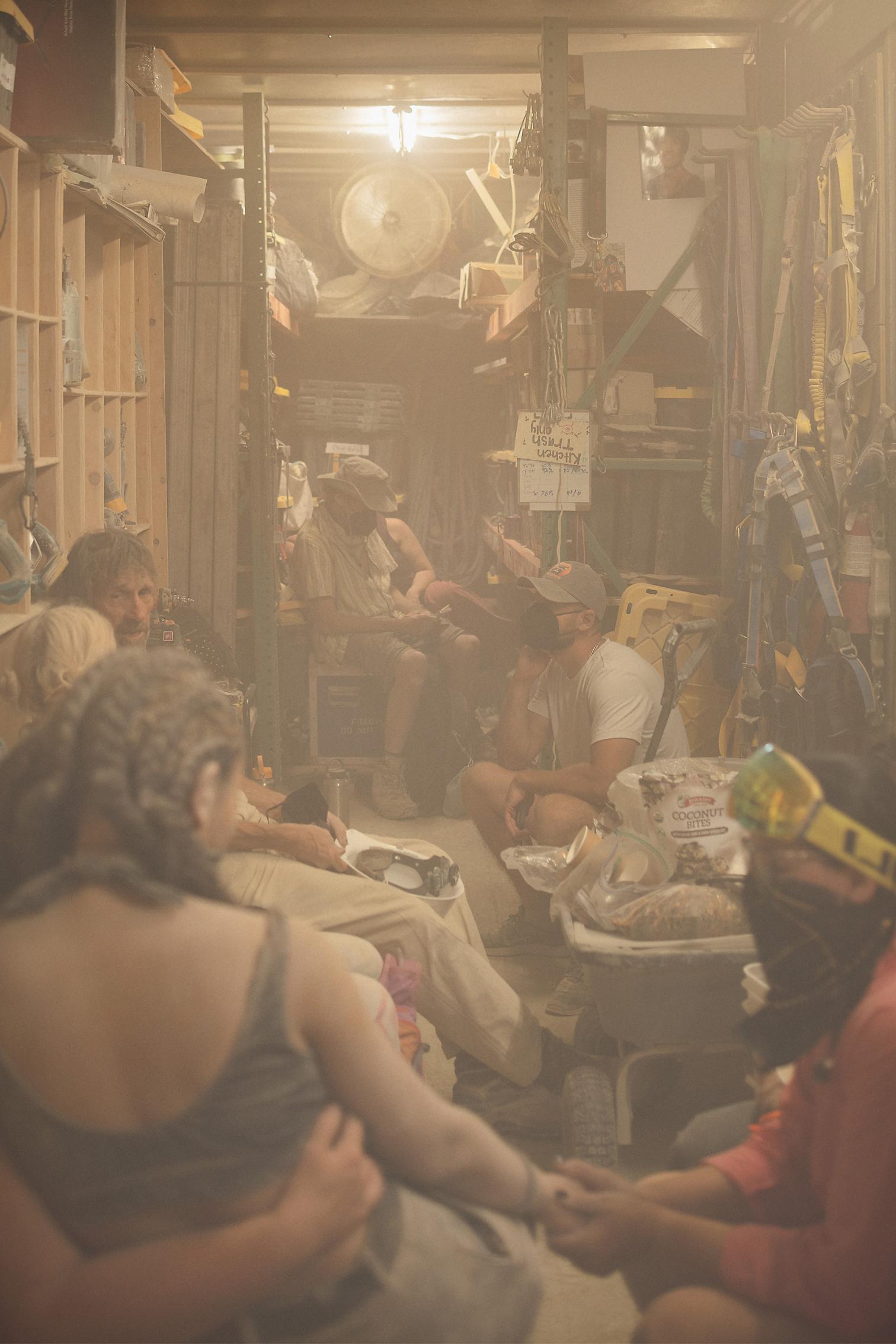
During the two sandstorms that struck in full swing of construction, the tools truck became a shelter.
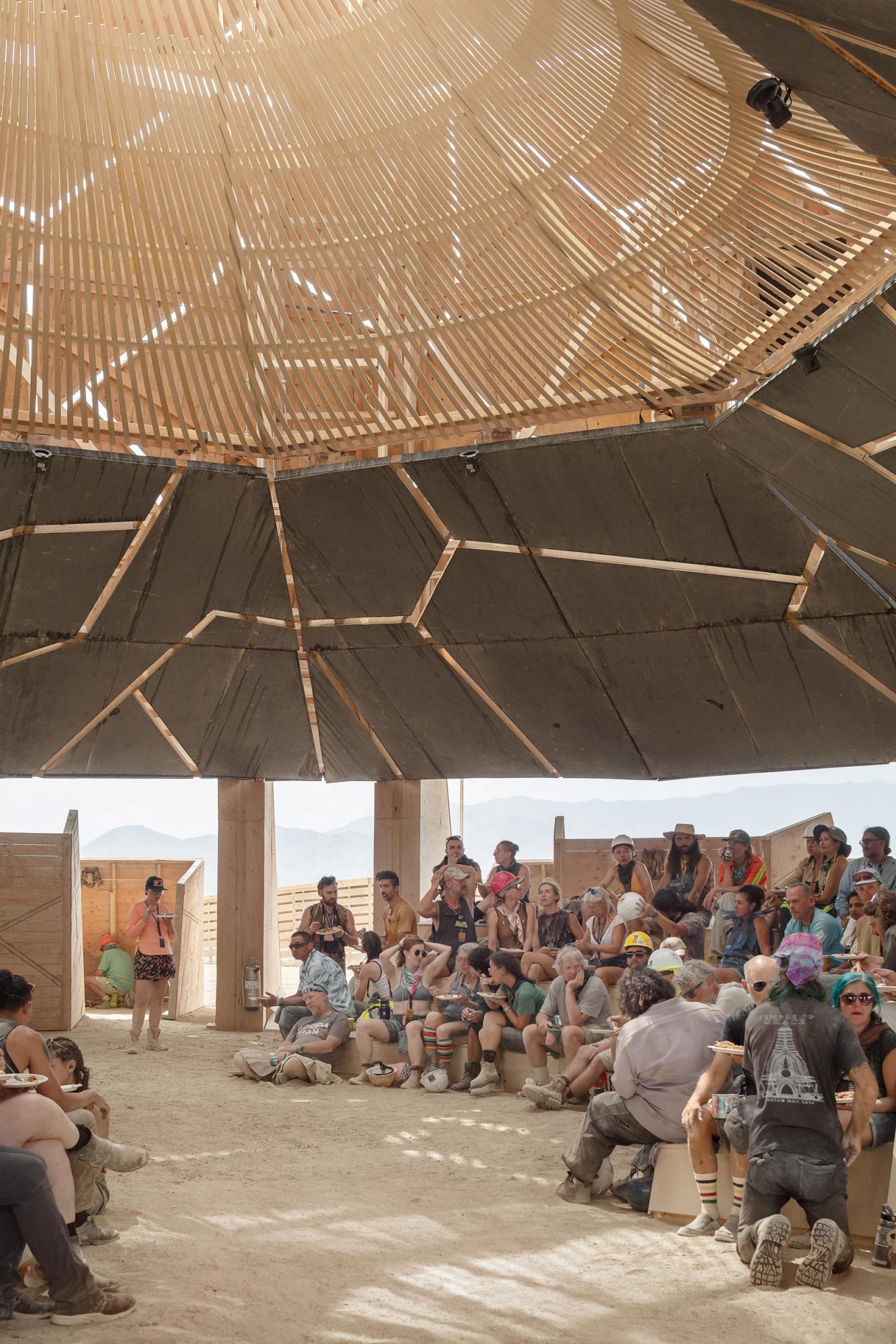
A luncheon was held inside the Temple to celebrate its completion. This was the only time that the interior could be documented, as taking photos and making videos was forbidden during the festival: people entering to leave tokens for their dearly departed could have a highly intimate and profound moment.
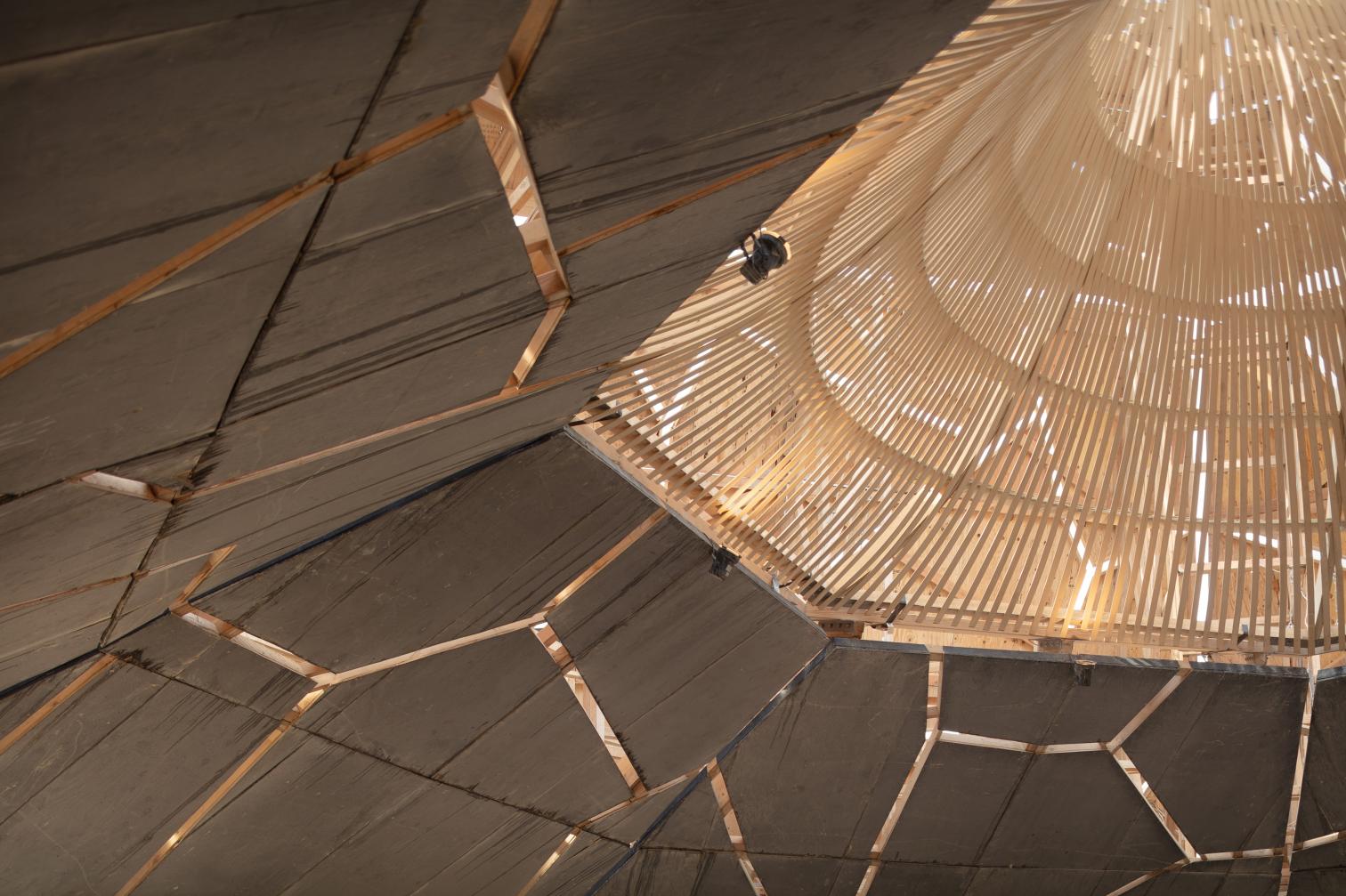
Interior detail of the ceiling.
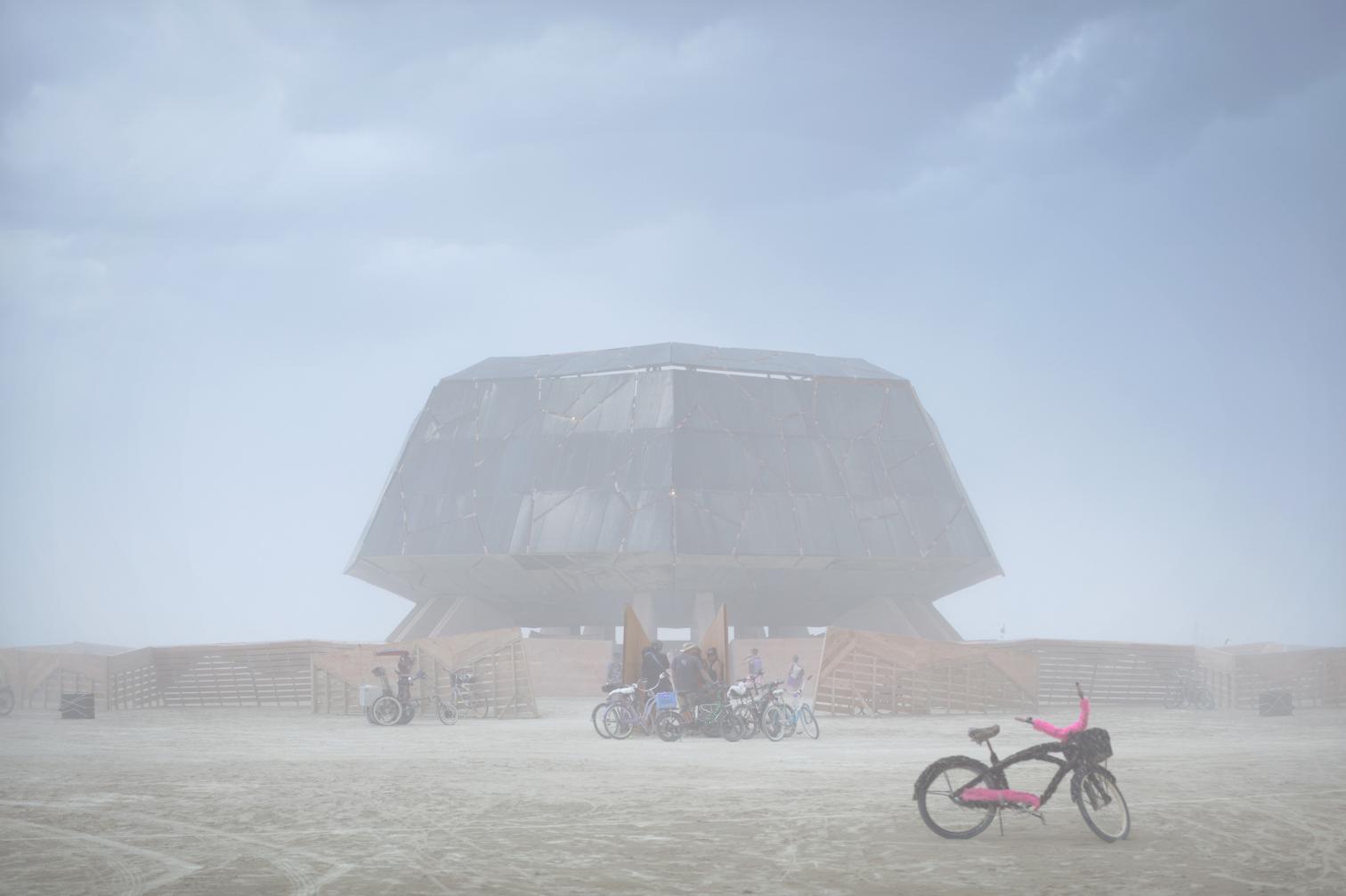
Sandstorm after the official opening.
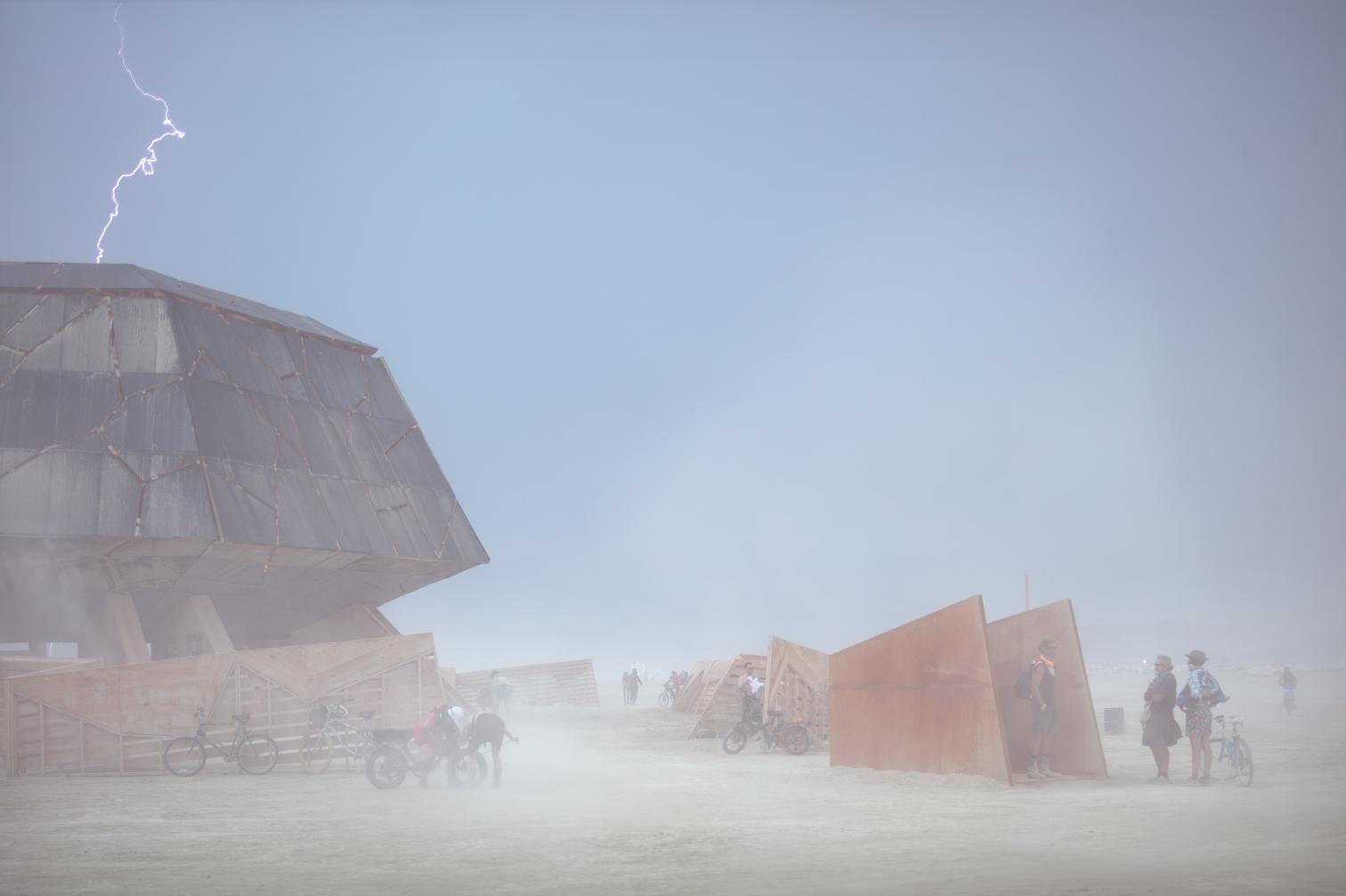
Sandstorm after the official opening.
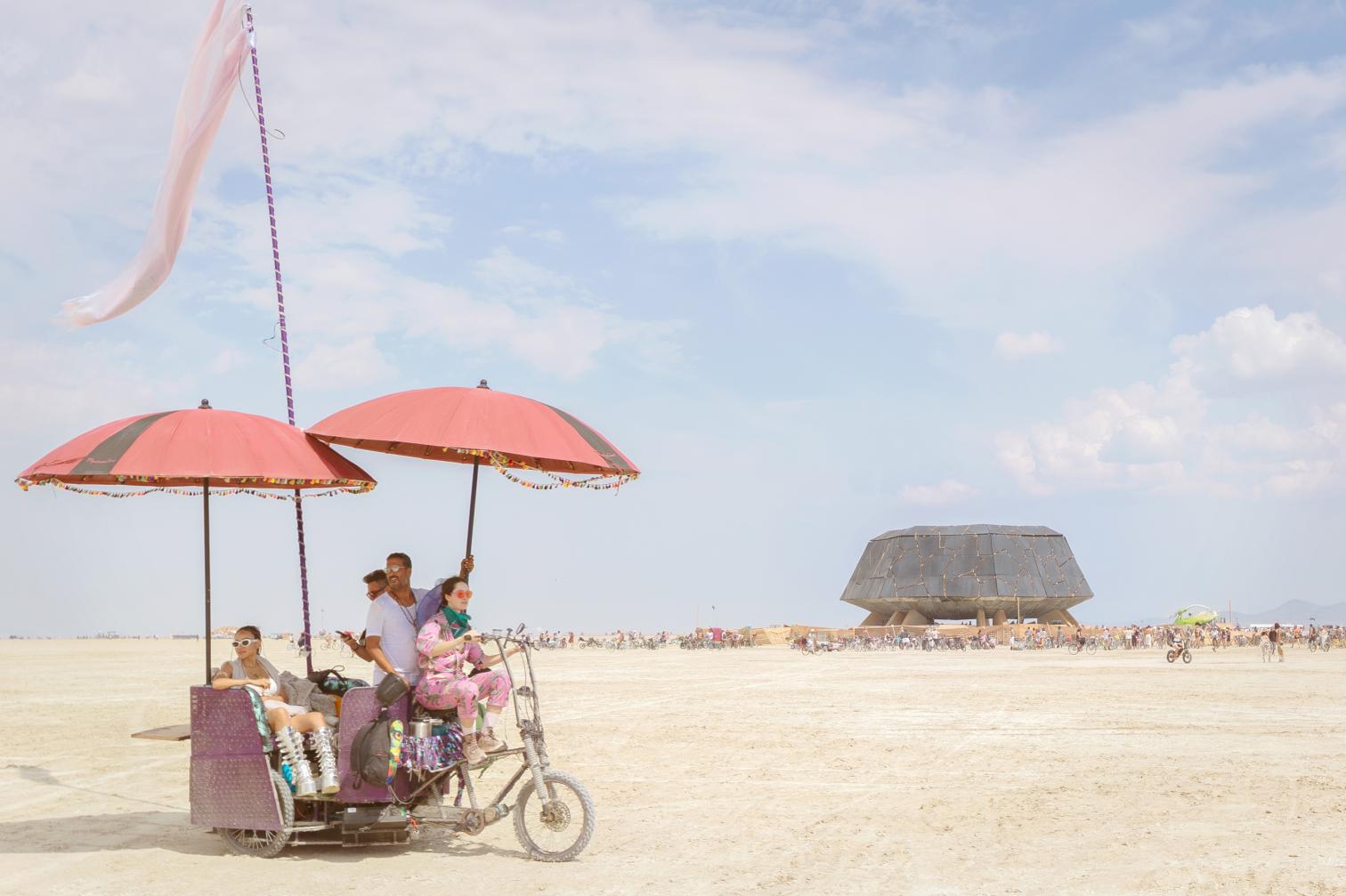
The Temple on festival days.
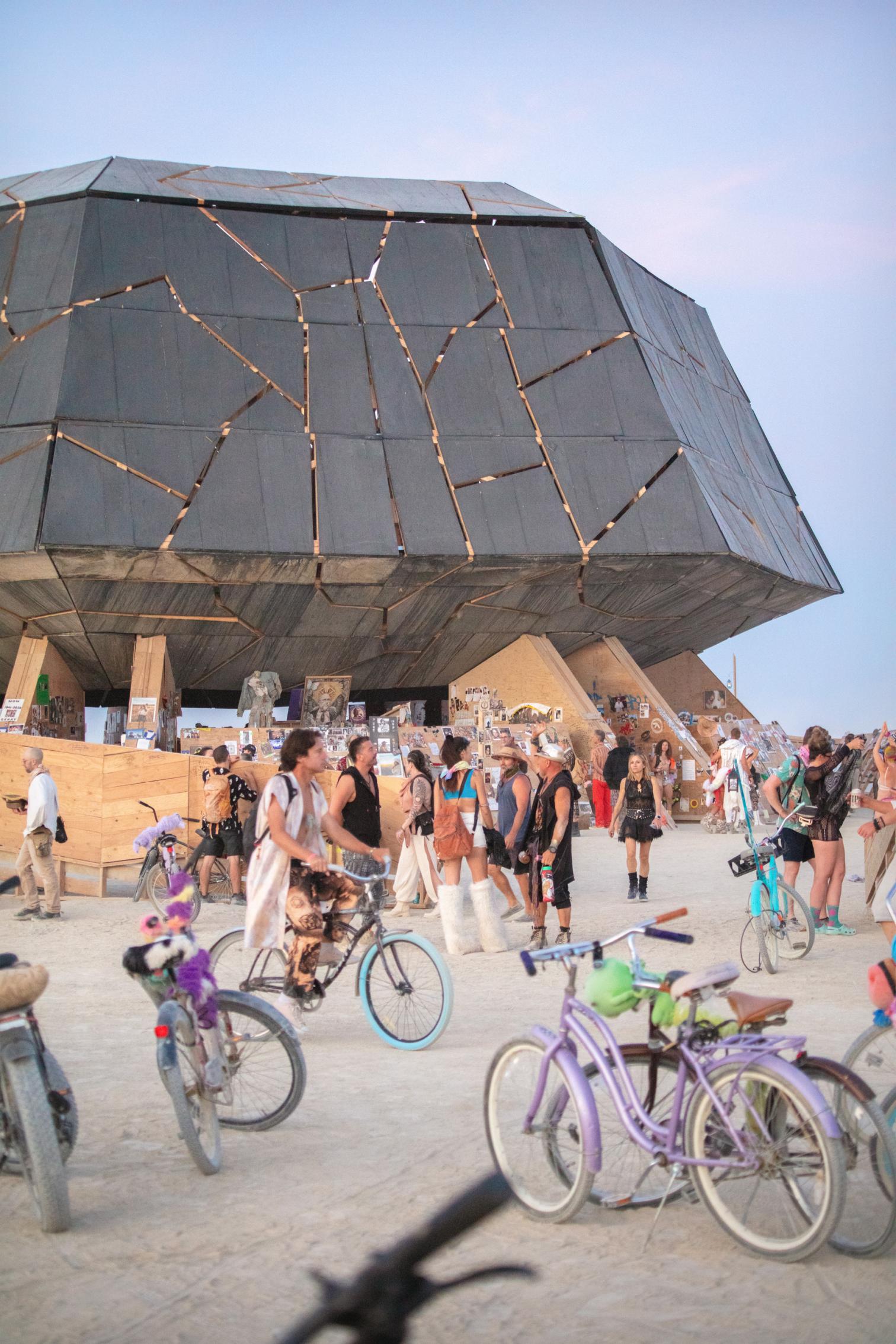
Tokens left in the temple overflowed to the outside.
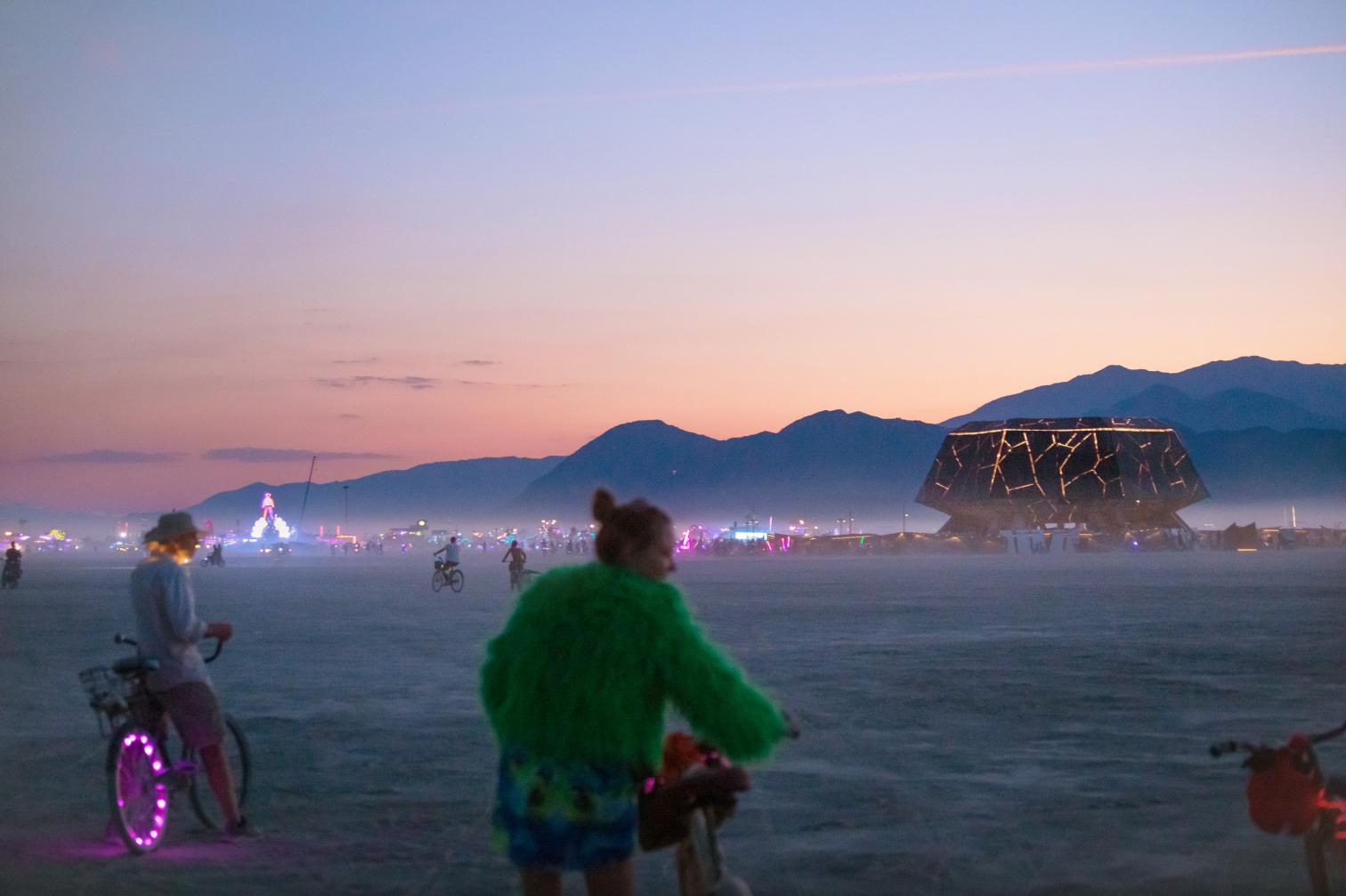
Night landscape with the Temple and the sculpture of Man lit up.
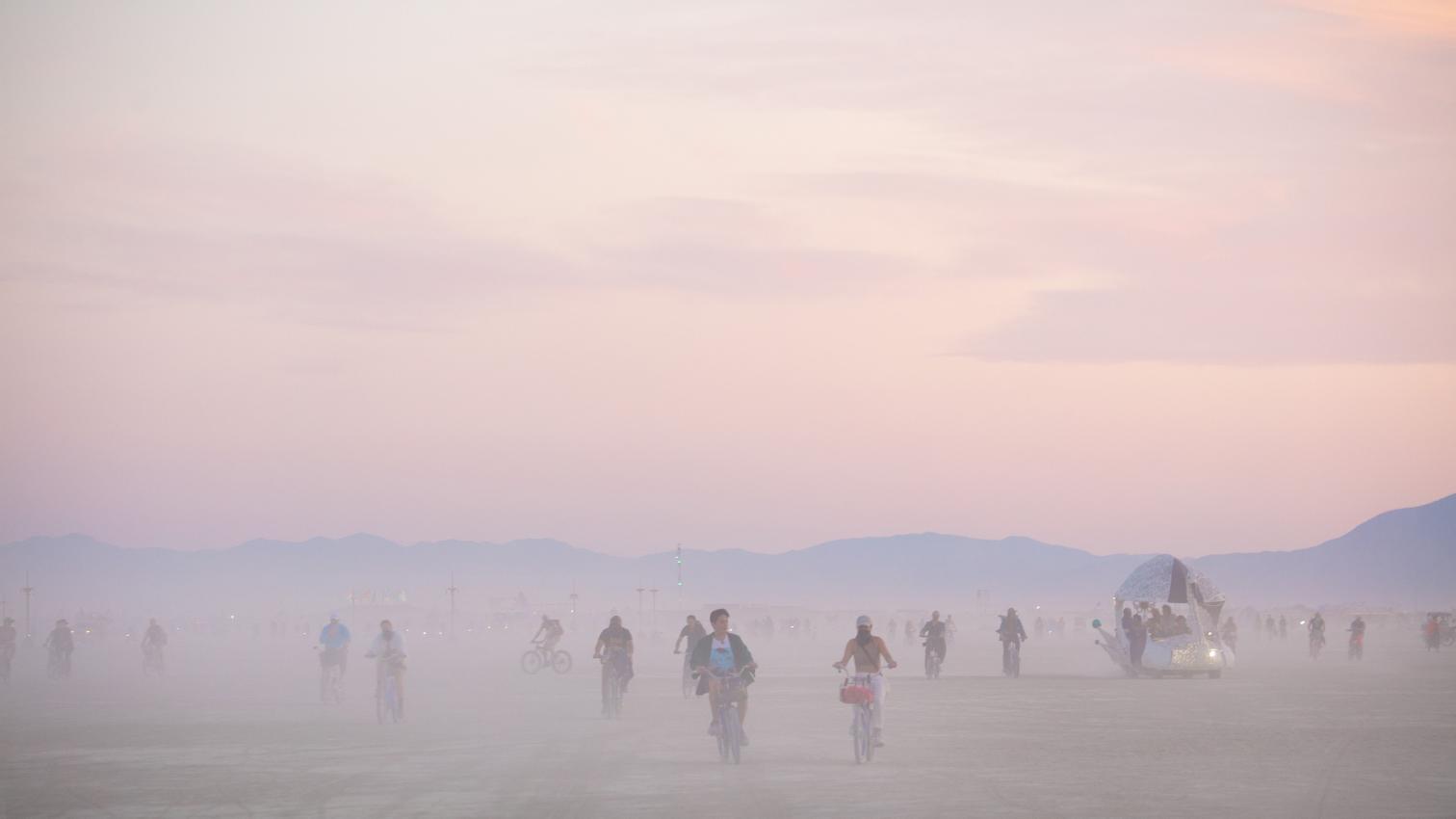
Bicycles approaching the Temple on the day of the burning.
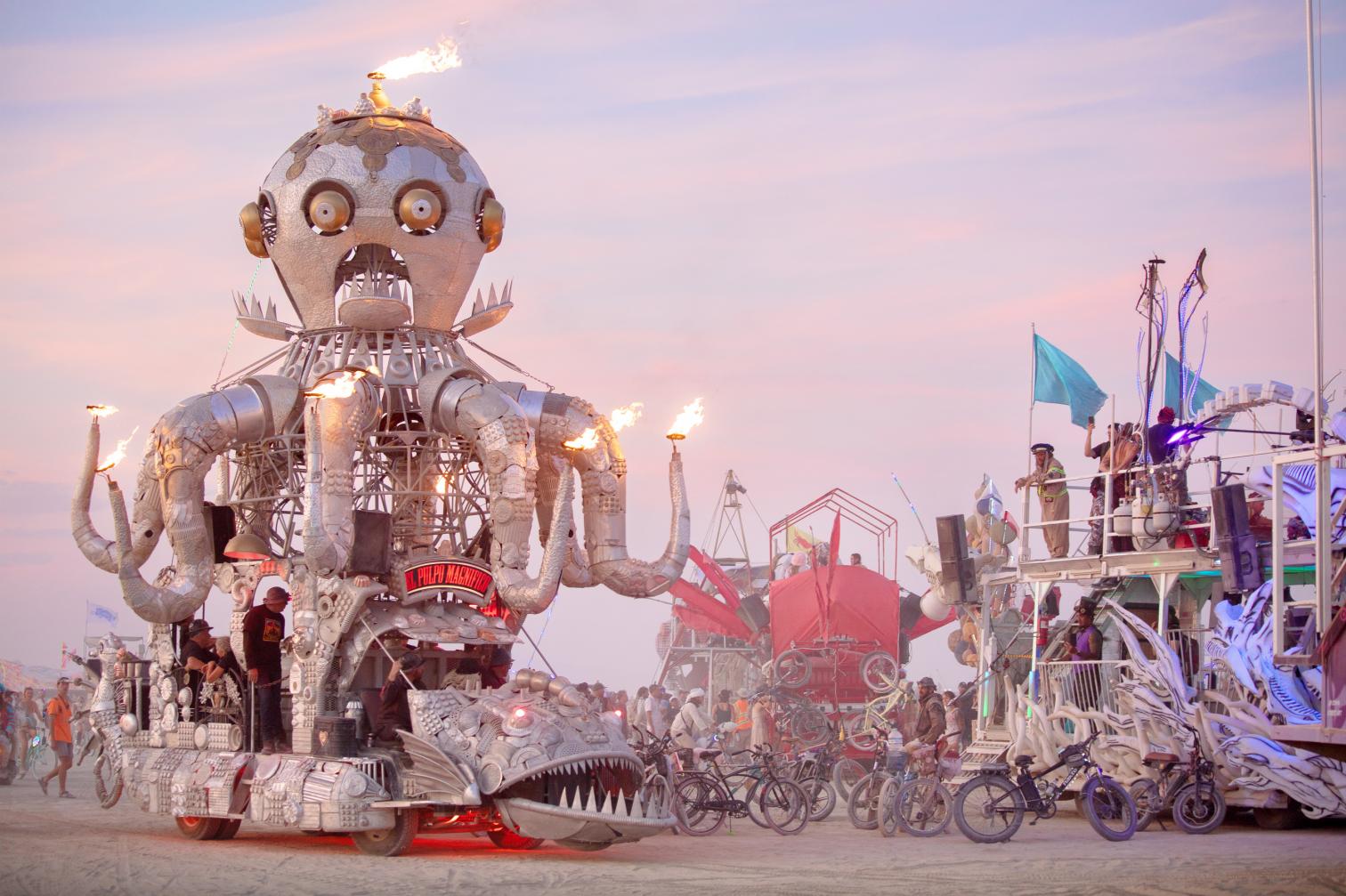
Artcars gathered to watch the Temple burn.
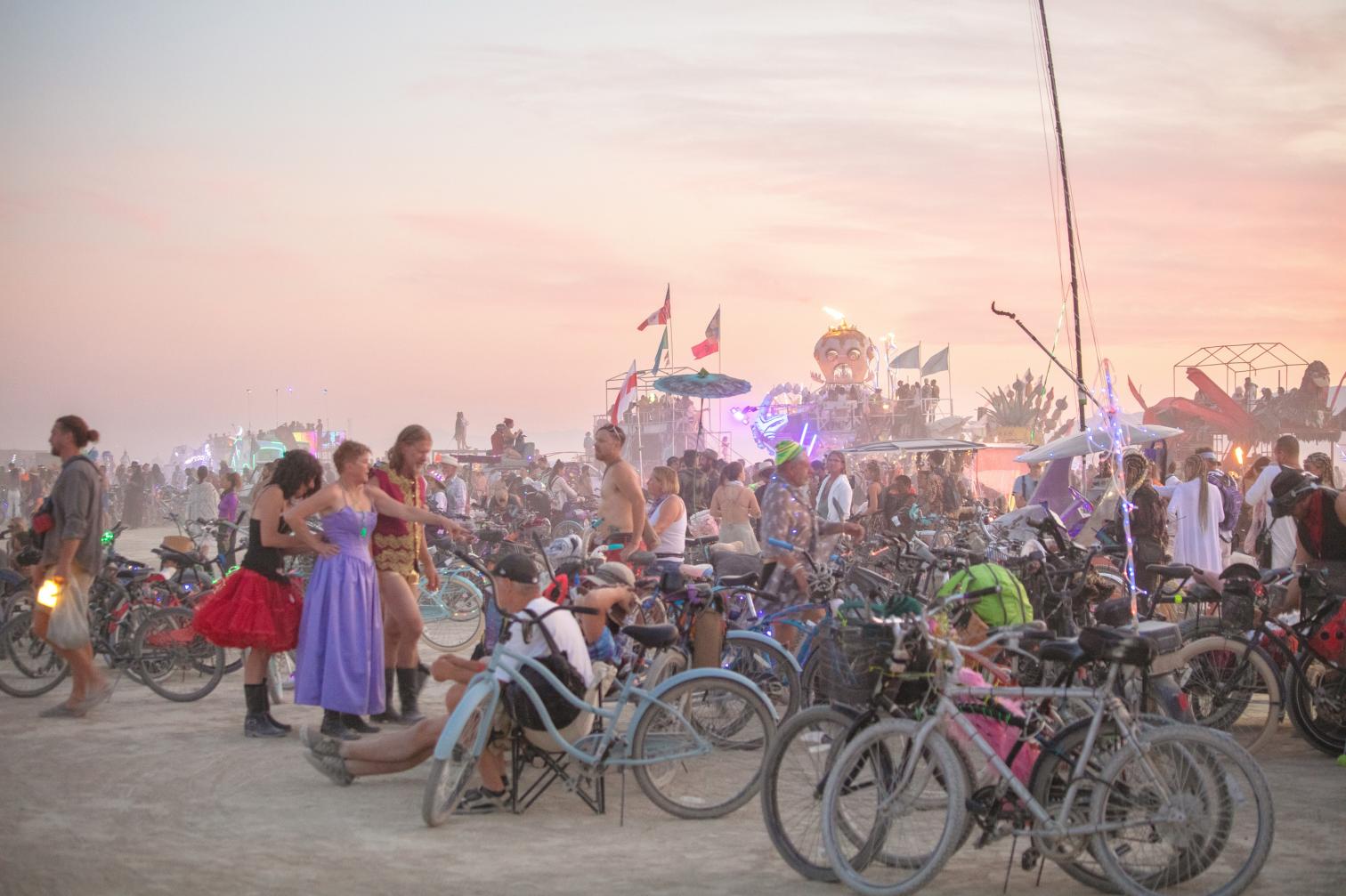
A crowd around the Temple on the day of the burning.
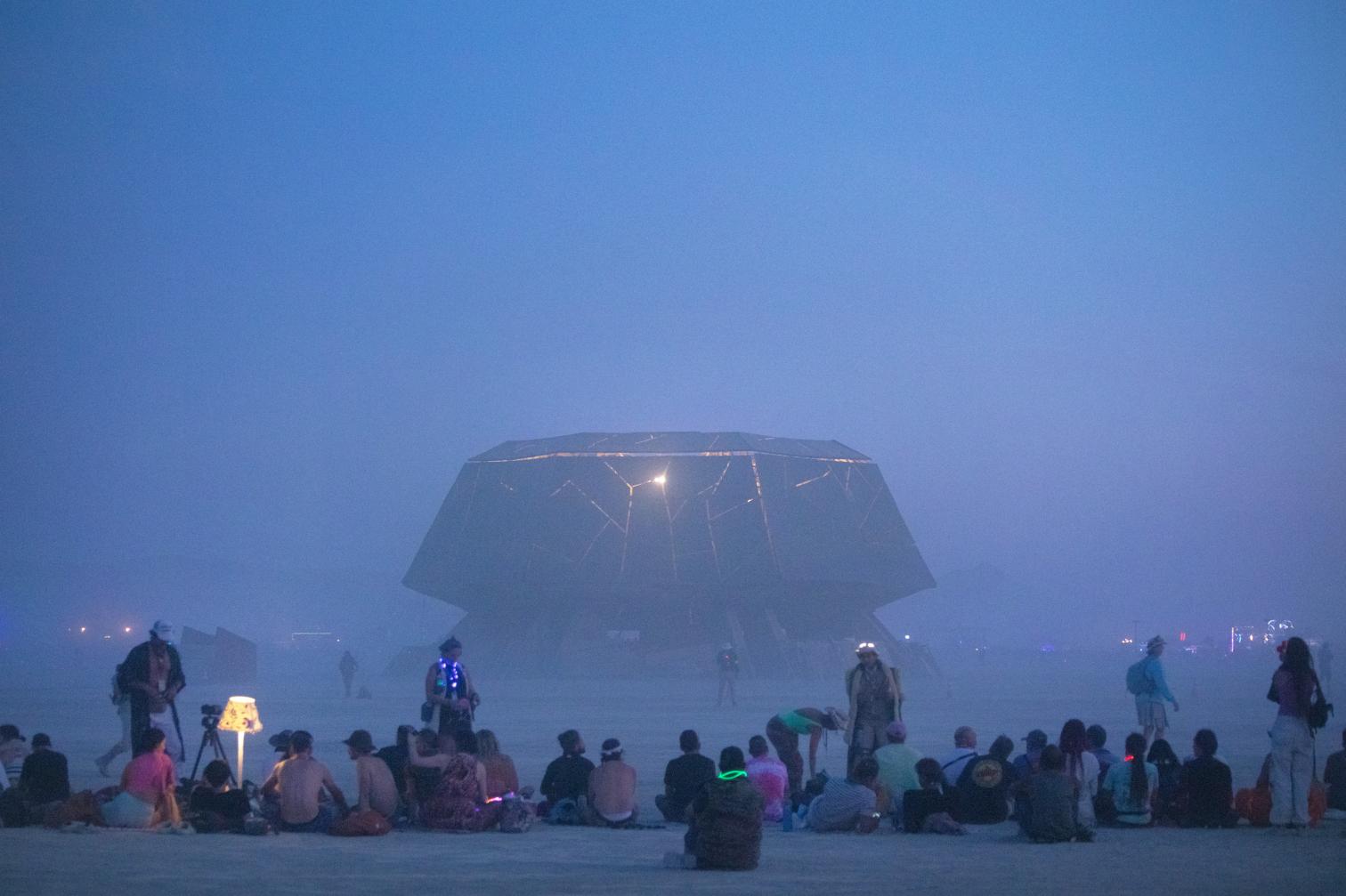
Front row of people awaiting the start of the fire.
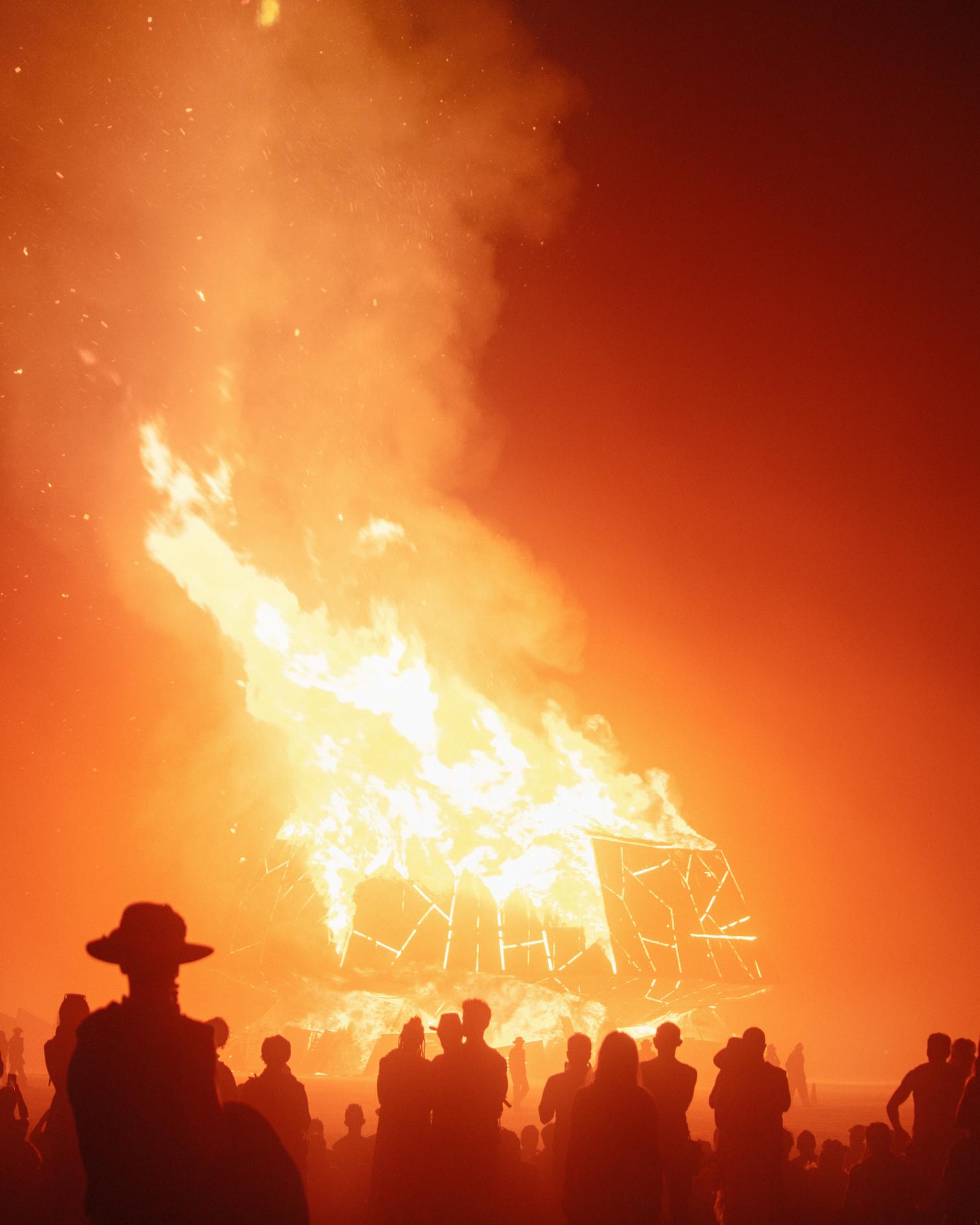
The burning of the Temple.

